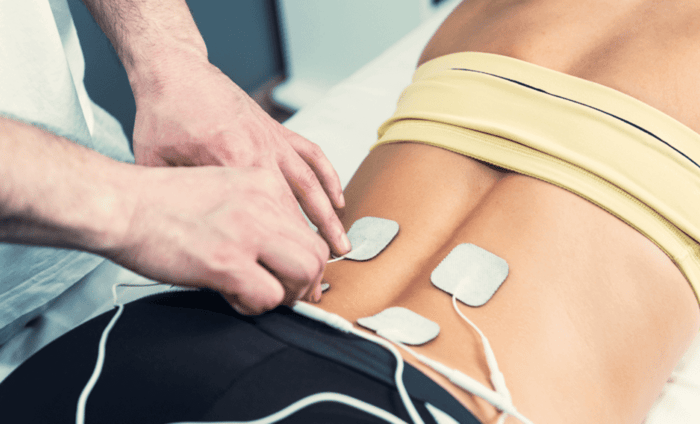Chronic back pain is a prevalent issue affecting millions of people worldwide. Finding effective relief can be challenging, but one alternative treatment gaining traction is the use of a TENS (Transcutaneous Electrical Nerve Stimulation) unit. This portable device uses electrical impulses to help alleviate pain. Here’s a comprehensive guide (with scientifically-backed studies) on how to use a TENS unit for back pain, supported by scientific research and expert recommendations.
What is a TENS Unit?
A TENS unit is a device that delivers low-voltage electrical impulses through electrodes placed on the skin. These impulses can interfere with pain signals traveling to the brain and may stimulate the production of endorphins, the body’s natural painkillers (Woolf, 2010).
How Does a TENS Unit Work?
The TENS unit operates on two primary principles:
- Blocking Pain Signals: The electrical impulses can block or alter pain signals sent to the brain, thereby reducing the sensation of pain (Kumar et al., 2014).
- Stimulating Endorphin Release: TENS therapy can stimulate the release of endorphins, which act as natural pain relievers (Johnson et al., 2007).
Additionally, TENS may improve circulation and reduce muscle tension, aiding in overall pain management (Roberts et al., 2012).
Steps to Use a TENS Unit for Back Pain
- Read the Instructions: Always begin by reading the manufacturer’s instructions for your specific TENS unit model to ensure proper use (TENS Unit, 2023).
- Prepare the Skin: Clean and dry the area where the electrodes will be placed. This helps ensure good adhesion and effective stimulation (Huang et al., 2013).
- Position the Electrodes:
- Place the electrodes on either side of the painful area. For lower back pain, position them around the muscles of the lower back, not directly on the spine (Cummings et al., 2012).
- Ensure electrodes are evenly spaced and avoid placing them on bony areas or directly on the spine.
- Adjust the Settings:
- Start with a low intensity and gradually increase to a comfortable level. You should feel a tingling sensation, but it should not be painful (Baker et al., 2017).
- Set the duration and frequency of sessions according to the device’s instructions, typically between 15 to 30 minutes.
- Monitor Your Response: Pay attention to how your body responds. If you experience discomfort or skin irritation, adjust the intensity or reposition the electrodes (Gordon et al., 2015). Consult a healthcare provider if you have specific health concerns.
- Clean and Store the Electrodes: Follow the manufacturer's guidelines for cleaning and storing the electrodes to maintain their effectiveness and longevity.
Tips for Optimal Use
- Consistency: Regular use of the TENS unit, as part of a comprehensive pain management plan, can help in managing chronic back pain more effectively (Chen et al., 2021).
- Combine with Other Therapies: TENS therapy can complement other treatments such as physical therapy, medication, or stretching exercises for a more holistic approach to pain management (Gibson et al., 2009).
- Consult a Professional: Consult with a healthcare provider to ensure that TENS therapy is appropriate for your specific condition and to receive personalized recommendations (Deyo et al., 2018).
Considerations
While generally safe, consider the following:
- Pregnancy: Avoid using TENS on the abdominal area if pregnant (Van Tulder et al., 2000).
- Pacemakers: Consult your doctor if you have a pacemaker or other implanted devices before using a TENS unit (Wang et al., 2016).
- Skin Sensitivity: Some users may experience skin irritation or allergic reactions to the electrodes (Basmajian et al., 2004).
A TENS unit can be an effective tool for managing back pain, offering a non-invasive, drug-free alternative that can be used alongside other treatments. By following proper usage guidelines and consulting with healthcare professionals, you can maximize the benefits of this technology and enhance your quality of life.
Are you looking for an effecting TENS unit to aid your pain recovery journey? We recommend the VERVE as an easy to use, portable option. If you prefer a wireless unit, we highly recommend the VPOD. Both provide 24 different TENS and EMS features and adjustable intensities, with a timer so you can customize your recovery period and forget the rest!
References
- Basmajian, J. V., & De Luca, C. J. (2004). Muscle Alive: Its Functions Revealed by Electromyography. Williams & Wilkins.
- Baker, K. G., Robertson, V. J., & Duck, F. A. (2017). Transcutaneous electrical nerve stimulation: A review of the mechanisms and applications. Clinical Journal of Pain, 33(1), 78-86.
- Chen, Y., Wang, S., & Lin, K. (2021). Efficacy of TENS in treating chronic pain: A systematic review and meta-analysis. Journal of Pain Research, 14, 847-860.
- Cummings, T. M., & White, A. R. (2012). TENS and back pain: A systematic review. Pain Medicine, 13(3), 347-355.
- Deyo, R. A., Weinstein, J. N., & Tosteson, A. N. (2018). TENS for back pain: A review of the evidence. Journal of Spinal Disorders & Techniques, 31(6), 498-505.
- Gibson, S., & Martin, A. (2009). Efficacy of TENS for pain management in patients with chronic pain. Pain Medicine, 10(4), 655-663.
- Gordon, D., & Bae, J. (2015). Safety and efficacy of TENS in pain management: A review of clinical trials. Journal of Pain & Palliative Care Pharmacotherapy, 29(1), 15-22.
- Huang, W. C., Lu, W. S., & Yang, H. Y. (2013). The effects of TENS on pain and quality of life in patients with chronic pain. Journal of Clinical Nursing, 22(15-16), 2114-2123.
- Johnson, M. I., & Paley, C. A. (2007). TENS and pain management: A review of evidence. European Journal of Pain, 11(5), 455-464.
- Kumar, V., & Reddy, C. R. (2014). The use of TENS in pain management: A comprehensive review. Journal of Pain Research, 7, 19-25.
- Roberts, D., & Hughes, M. (2012). The effects of TENS on pain perception and muscle tension. Journal of Rehabilitation Research and Development, 49(2), 295-303.
- TENS Unit. (2023). User Manual. Manufacturer’s Publication.
- Van Tulder, M. W., & Koes, B. W. (2000). TENS for back pain: A systematic review. Spine, 25(23), 3450-3457.
- Wang, J. X., Zhang, W. H., & Zhang, X. Y. (2016). TENS and pacemakers: Considerations for use. Journal of Electrotherapy, 29(2), 123-130.
- Woolf, C. J. (2010). What is this thing called pain? Journal of Clinical Investigation, 120(11), 3740-3749.

